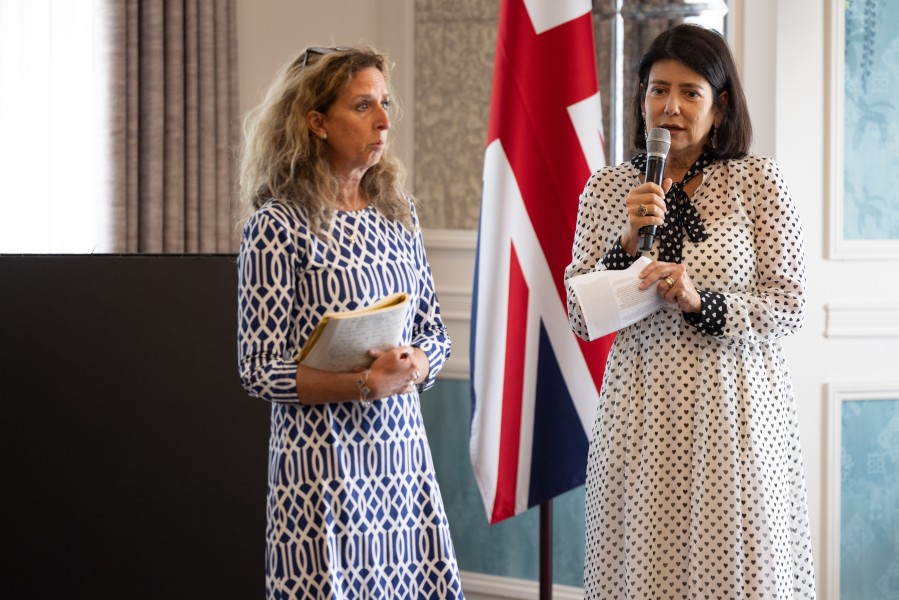Closing the sustainable infrastructure gap
By Victoria Miles and Isabella da Costa Mendes, Co-CEOs and Co-Founders of ImpactA Global
As Co-CEOs of ImpactA Global, we were delighted to attend the Climate Finance Mobilization Forum in Windsor today, inspired by the work of His Majesty King Charles and the Sustainable Markets Initiative.

As a new initiative ourselves, recently launched, with backing from UK's Legal & General Capital, to provide debt financing for sustainable infrastructure projects in Emerging Markets (EM), we are encouraged to see this issue prioritised on the agendas of World leaders and global industry heads.
EM countries are some of the most exposed to the effects of climate change, even if they are less responsible for it. As a women-led firm, we know that women in Emerging Markets are especially vulnerable, as they are likely to depend for food and income on the land and natural resources under threat. And yet climate finance – for mitigation and adaptation – is not reaching these same countries efficiently.
We have seen the daunting numbers around the sustainable infrastructure gap in global EM and the investment required to deliver the UN SDGs - with official estimates as high as US$2.5 trillion annually. The debate is not just around mobilising vast amounts of capital, but mobilising the right sort of capital that can unlock the right kind of investment, in the right kind of way. With focused and coordinated action, the subject of discussion today, we feel that meaningful steps can be taken to address climate funding gaps in a way that is also sustainable from a financial perspective.
Debt financing (which, for most developed world projects, is usually a matter of optimising tenor versus price), remains a very real bottleneck for EM infrastructure projects, especially in those markets rated below investment grade. The tendency of governments in less developed markets to fund infrastructure projects through their budget, rather than through PPP structures, can also add to fiscal and debt sustainability pressures that have magnified since Covid.
While global development finance institutions and other official sector creditors - such as export credit agencies - play a critical role in the provision of direct long-term debt or unlock private financing through long-term guarantees, their resources are finite - both in terms of capacity and financial fire power. We need to leverage these resources more efficiently to tap into the huge potential pools of private capital that could be mobilised. Seen through a development lens, the quantum of private financing required for addressing climate challenges and reducing inequalities can feel immensely challenging, although in our view it also represents a tremendous opportunity, and one that is generally overlooked by market participants.
Only a handful of institutional investment vehicles exist today that are specifically set up to provide debt financing for greenfield projects exclusively in EM and are properly committed to investing long-term in this sector. Traditional infrastructure investors can be reluctant to take contract risk in new or unfamiliar markets, or invest opportunistically, while traditional EM debt investors, typically unfamiliar with greenfield project risk, have focused on opportunities in liquid bond markets. Meanwhile higher capital requirements make it more challenging for traditional banks to extend long dated financing in non-investment grade markets.
This is the challenge that ImpactA Global is focused on: as an asset class, EM infrastructure debt has historically proven resilient, exhibiting lower defaults and higher recoveries than other asset classes in EM, in fact generating returns in line with investment grade assets. It should present a compelling, scalable investment opportunity for global institutional investors, offering the potential for stable long dated returns, alongside meaningful impact.
In the context of a global fixed income bond market of over US$127 trillion (at YE21) with annual issuance exceeding US$20 trillion, a small shift in global fixed income allocations into EM infrastructure debt could meaningfully move the needle for climate financing. In order to achieve that, we need to deliver instruments in a standardised, investible form that can be readily replicated.
We recall the work in the 1990s and 2000s to encourage standardisation in EM bonds contracts and the launch of EM index products. Annual volumes of cross border bond issuance for EM companies alone rose from US$20 billion 2000 to more than US$541 billion by 2021 as market confidence grew. There is no reason the same multiples cannot be achieved to finance sustainable infrastructure in EM.
To date, much of the valuable work on innovation undertaken by multilaterals and DFIs has been in the delivery of bespoke instruments; these can nonetheless be challenging to replicate or scale up. Standardisation of PPP contracts and debt financing agreements - capitalising on the momentum of critical World Bank initiatives such as the PPP Knowledge forum presents an important opportunity. This can help generate a globally diversified portfolio of high impact projects that can deliver consistent and predictable returns. We will play our part with the establishment of ImpactA Global, deploying capital in EM climate transition and social infrastructure projects, helping to close funding gaps.
We look forward to further collaboration and advancement of the important initiatives discussed today.